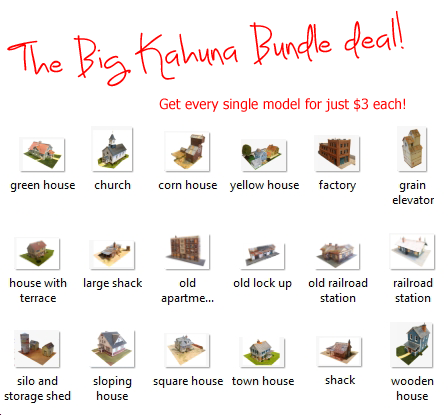“Hi Al.
I started work on the 6″ scale Little Samson about 4 years ago.
It took me 2000 hours to complete.
As said it is a half size model of a Little Samson steam tractor originally built at Kings Lynn, Norfolk, by Savage Brothers about 1900. No original engines survive today.
The engine has two forward and two reverse gears and has a maximum speed of about 6 MPH and is very powerful indeed.
It weighs in the region of 1300kg although I have not actually weighed it.
The boiler was professionally built by AJB Engineering in Derby.
Megan is fired by coal. The wheels were fabricated by myself and had them rubbered in England. Each rear wheel weighs 62kg.
Model engineering is my hobby, I have no engineering background. Whilst toiling in the UK I was a plumber.
Drawings and very good castings can be bought from Edward George at www.littlesamson.co.uk at reasonable prices.
Regards.
Roger”
“Dear Mr. Lee,
I shared with you some photographs of my latest layout “Little Wlakley” recently.
That layout had several inspirations including your engine shed kit.
Building that kit was fun and John’s (not me) video gave me some ideas on how to improve my model.
Because my engine shed faces the front and the interior is visible… Seeing the source of the cardboard was an issue…
Painting the interior brown was a help but still fell short of what I wanted to achieve. It was the video that set off a new light.
Hare are photos of my rebuilt enginehouse… I will also send you the files for my “detail kit” These are yours as a thank you for your site…
Sincerely,
John”
My word, we’re getting some nice variations on the engine shed now, and it was all thanks to John who led the charge.
Dangerous Dave also got involved.
And look what Bob did with the original engine shed.
All good stuff!
That’s all this time folks. Please do keep ’em coming. And don’t forget if you’re still scratching your head over how to start, the Beginner’s Guide is here.
Best
Al
PS Latest ebay cheat sheet is here (still updated every single day…).











Wow, what great craftsmanship. Where can I find the big Kahana deal on ebay?
Hi John, you have done a superb job on your engine shed. Looks as if it has been in use for many years. Look forward, on a positive note, to see some detail bits and pieces inside. Keep it up. Brian (hall of fame member)
I found the car tapes I could find rather wide for road lining in HO, so I used some Slater’s Microstrip just stuck down with Evo, then painted a thick grey Matt over for the road surface, and then it was easy to lightly scrape the dried paint off the lines with a craft knife.
Rod
Brilliant models. Thanks for sharing them!
Wonderful job on the engine house. Most modelers skip interior details because they either think they don’t matter………..or it’s just too much extra work.
Beautiful job they look real THANKS FOR SHARING VIC
A very nice traction engine model.
great tips and the tractor story was never what I imagined just unbelievable photo well done.
Great engine house. I like your interior framing.
Another tip. For making painted lines on roadways, etc., try your local artist supply house. As a commercial artist I have used tape in sizes as thin as 1/32 inch. It is available in numerous colors, including yellow, white, and red.
Roger s Traction engine is superb .,I have seen a few at shows and marvel at the quality of the craftmanship so well done that there are still dedicated folks still around. john
What a wonderful traction engine.
Great work on that engine shed, certainly adds to the 3d effect.
Great mechanical job on storing the layout against the ceiling of the garage. Where did you get the pulleys that were used?
Phil, Bklyn.USA
Beautiful work Roger and John. How long can the steam tractor run on a firebox full of coal? Are you able to use it to perform actual work on your land or is it just for show? Thanks to both of you for sharing your photos and ideas. And thanks to Al for making this forum possible.
Looks good, Keep up the good work.
Roger, Thanks for the pic of the steam tractor. There is a place not far from me called Williams Grove, PA. They have an annual steam week with both stationary and traction engines. I saved you pictyre to use as a guide for my future late 1800s layout. (Way in the future) It will add a demention of realism “down on the farm” or in an indrusrial setting. Thanks again
Terry in PA
The New England Steam and Wireless Museum in Rhode Island has a large collection of working steam engines. Well worth visiting if you have any interest in steam engines or early wireless technology: https://newsm.org/